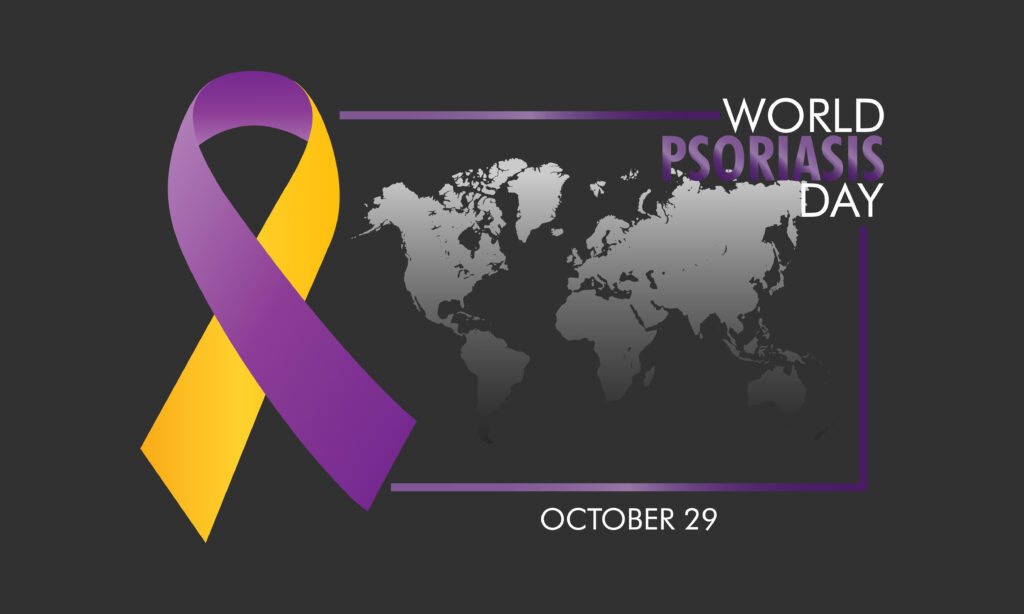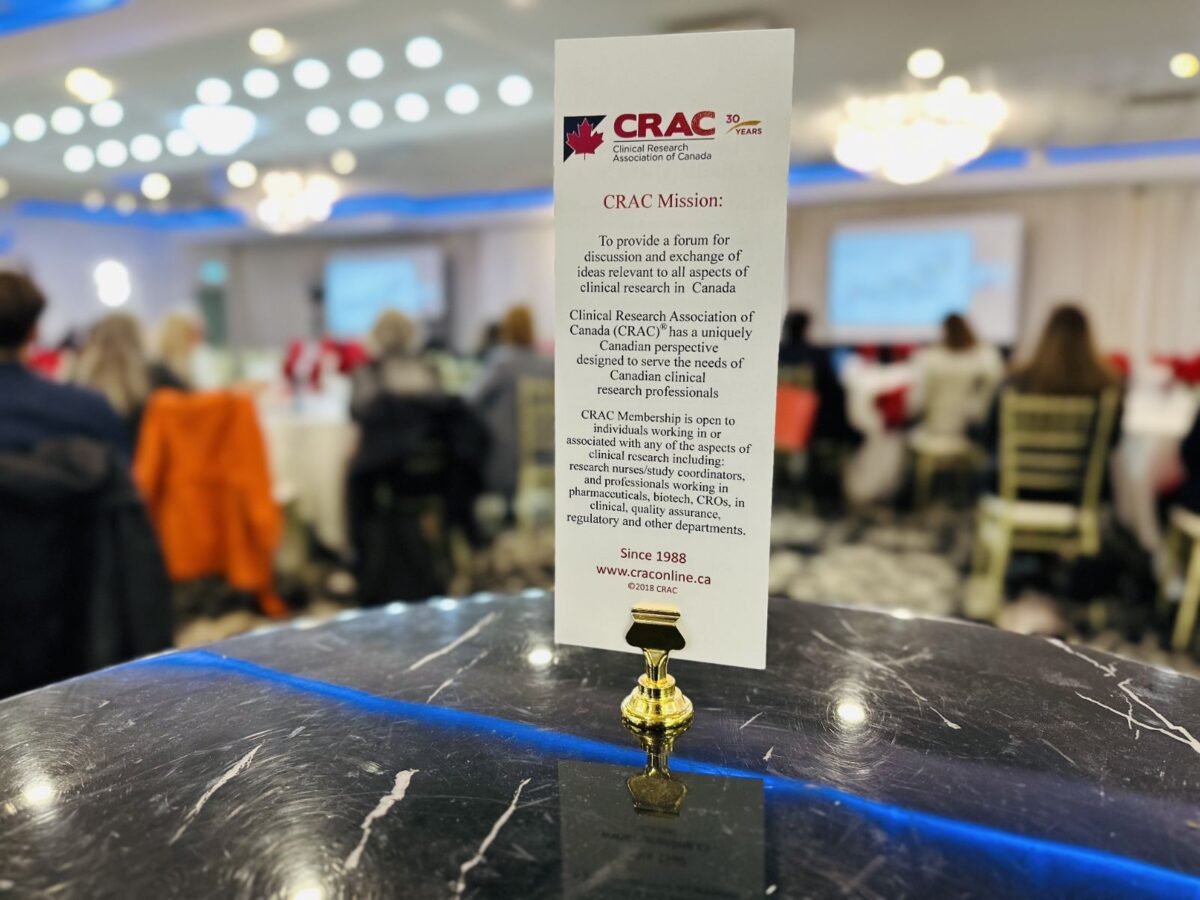Every year on October 29, World Psoriasis Day brings together people living with psoriatic disease, healthcare professionals and advocates to raise awareness that psoriasis is not just skin-deep.
The theme of World Psoriasis Day 2025 from the International Federation of Psoriatic Disease Associations (IFPA) is “Psoriatic Disease and Comorbidities — Understanding the Domino Effect,” which highlights that psoriatic disease is not “just a skin condition,” but a lifelong, systemic disorder linked to serious health risks such as heart disease, diabetes and mental-health challenges.
As such, the campaign emphasizes the need for holistic care that addresses the full spectrum of health impacts linked to psoriasis. It calls for greater awareness among healthcare providers, policymakers and the public about early detection, prevention and management of related conditions to improve overall quality of life for people living with psoriatic disease.
Around the world, more than 125 million individuals are affected by psoriasis or psoriatic arthritis. The awareness day is a vital moment to highlight the scope of the condition and push for better diagnosis, management and innovation.
Understanding Psoriasis
Psoriatic disease is a chronic, immune-mediated condition that primarily includes psoriasis and psoriatic arthritis (PsA). It is characterized by an overactive immune response that accelerates the skin-cell lifecycle, leading to red, scaly plaques that can appear anywhere on the body.
PsA, which affects up to 30% of people with psoriasis, involves inflammation of the joints and surrounding tissues, causing pain, stiffness and potential joint damage if untreated.
Beyond the visible and musculoskeletal symptoms, psoriatic disease is now recognized as a systemic inflammatory disorder linked to several comorbidities, including cardiovascular disease, type 2 diabetes, metabolic syndrome, inflammatory bowel disease and depression. The chronic inflammation driving these conditions suggests shared pathways involving cytokines such as TNF-α, IL-17 and IL-23.
Although there is no cure, advances in biologic therapies, oral small-molecule inhibitors and precision-medicine approaches have transformed outcomes. Today, many patients can achieve near-complete skin clearance and durable remission of joint symptoms. Ongoing research aims to improve early detection, personalize treatment and address the full burden of disease, including its psychosocial and metabolic dimensions.
For many people living with psoriasis, traditional treatments, such as topical creams, older phototherapy and systemic agents, have helped to some extent but often fall short of achieving clear skin, sustained remission or tackling comorbidities.
Innovations are critical because they offer not only improved skin outcomes but also the possibility of modifying the disease course and reducing associated risks.
Patient-Centric Care and Comorbidity Management
A major insight coming from awareness efforts and recent research is that treating psoriasis effectively demands a dual focus of clearing skin and managing the whole person.
On this World Psoriasis Day, the call is to:
- Screen patients for comorbidities early and integrate dermatology, rheumatology, cardiology and psychology into care pathways
- Engage patients in decisions about treatment, address quality-of-life concerns (itch, sleep, stigma) and ensure equitable access to newer therapies and digital supports
- Leverage real-world evidence and patient-reported outcomes to validate the long-term benefits of newer treatments beyond skin clearance
Consider participating in events, sharing your story, or supporting organizations that fund innovation and education in psoriatic disease. Every voice helps reduce stigma, accelerate treatment advances and improve outcomes.
Innovations in Psoriasis Treatment
Here are some of the most promising developments in treatment and technology for psoriatic disease.
Next-Gen Biologics
The psoriasis space has seen a surge of billion-dollar blockbuster biologic treatments, such as Novartis’ Cosentyx (secukinumab), AbbVie’s Humira (adalimumab) and Skyrizi (risankizumab-rzaa). Other notable and effective drugs include the oral medication Sotyktu (deucravacitinib) from Bristol Myers Squibb and the cream Zoryve (roflumilast) developed by Arcutis Biotherapeutics.
A new wave of biologic and targeted therapies is expanding treatment options for psoriasis.
Bimzelx (bimekizumab selectively inhibits both IL-17A and IL-17F (and IL-17AF), showing strong efficacy in moderate-to-severe plaque psoriasis.
The humanized monoclonal antibody, developed by UCB, was first approved by the FDA in October 2023 for plaque psoriasis and since then, garnered three additional approvals in PsA, active non-radiographic axial spondyloarthritis (nraxSpA) and ankylosing spondylitis in September 2024, as well as moderate to severe hidradenitis suppurativa (HS) in November 2024.
The subcutaneous injection was projected to hit blockbuster status right out of the gates, and it racked up a respectable €607 million ($706.2 million) in its first full year on the market in 2024. Bimzelx was highlighted among UCB’s growth drivers and total sales are expected to hit over €1 billion ($1.1 billion) in 2025.
UCB projects peak annual revenue for Bimzelx to exceed €4 billion (greater than $4 billion) in the upcoming years.
Johnson & Johnson’s icotrokinra is a highly anticipated first-in-class once-daily oral peptide being developed for plaque psoriasis. Developed in collaboration with Protagonist Therapeutics, it selectively blocks the IL-23 receptor and is being investigated for the treatment of moderate-to-severe plaque psoriasis in adults and adolescents (≥ 12 years).
Johnson & Johnson submitted a New Drug Application (NDA) in July 2025, with a decision expected in 2026.
Icotrokinra outperformed competing therapies in late-stage trials, achieving superior skin clearance at 16 and 24 weeks with a favorable safety profile.
In the biosimilar space, the approval of Selarsdi (ustekinumab-aekn), a biosimilar to Janssen’s blockbuster Stelara (ustekinumab), adds another treatment option at potentially lower cost and broader access.
It was approved in the US in April 2024 via a partnership between Alvotech and Teva Pharmaceutical Industries Ltd. for subcutaneous use and later for all matching indications of Stelara, including adult and paediatric moderate-to-severe plaque psoriasis (age 6+), active psoriatic arthritis (age 6+) and in adults with moderately to severely active Crohn’s disease and ulcerative colitis.
In May 2025, the FDA granted it an interchangeable designation with Stelara, meaning pharmacists may substitute it without a new prescription in matching presentations.
The clinical development included a head-to-head biosimilarity study in patients with moderate to severe plaque psoriasis in which Selarsdi demonstrated an 87.3% improvement in PASI (Psoriasis Area and Severity Index) at Week 12 compared to 86.8% for Stelara, and showed no clinically meaningful differences in safety, pharmacokinetics or immunogenicity through Week 52, including in patients who switched from Stelara to Selarsdi.
Digital Tools, AI and Precision Dermatology
Technology is expanding how psoriatic disease is diagnosed and managed.
Digital tools for managing psoriasis include mobile apps for symptom tracking, telemedicine for virtual consultations, and at-home phototherapy devices. These tools can help patients monitor their condition, improve communication with their doctors, and access treatment more conveniently.
Psorcast is an iOS app developed by NYU Langone Health and Sage Bionetworks that helps users track psoriatic disease through digital assessments and photos. The app allows users to capture images of their lesions to monitor changes over time and track symptoms using simple, interactive tasks, such as measuring the body surface area affected. Users can also generate and share a video summary of their symptoms with their care team to support more informed and personalized clinical discussions.
More broadly, a review of AI-powered approaches in inflammatory skin diseases points to potential for generative models, digital biomarkers and personalized care pathways that tailor treatment to the individual’s disease phenotype and response profile.
These digital innovations hold promise to reduce burden (fewer clinic visits, remote monitoring), improve assessment consistency and accelerate research and therapeutic optimisation.
Novel Topical Therapies
Two of the newest topical treatments for psoriasis include Vtama (tapinarof) and Zoryve (roflumilast).
Vtama, developed by Dermavant Sciences (a subsidiary of Organon & Co.), is a non-steroidal, once-daily aryl hydrocarbon receptor (AhR) agonist cream that was approved in the US in 2022 for the treatment of plaque psoriasis in adults.
Zoryve is a steroid-free phosphodiesterase-4 (PDE4) inhibitor available as both a cream and foam formulation. It has been approved for the treatment of plaque psoriasis, including scalp and body involvement, in patients aged 12 and older for the foam and as young as six years old for the cream.
The field of psoriatic disease treatment and care is evolving rapidly. With new biologics, oral therapies, digital diagnostics and topical innovations, the horizon is brighter than ever. Yet realising the full potential of these advances requires a patient-centred, holistic approach that addresses comorbidities, access and equity.
On World Psoriasis Day 2025, building awareness is key to pushing for meaningful change. Because when we understand psoriatic disease in all its dimensions, we stand a better chance of interrupting the “domino effect” and improving the lives of millions worldwide.













Join or login to leave a comment
JOIN LOGIN